Serving 142 students in grades 4-5, Woodland Elementary School ranks in the top 50% of all schools in Illinois for overall test scores (math proficiency is top 30%, and reading proficiency is top 50%).
The percentage of students achieving proficiency in math was 35-39% (which was higher than the Illinois state average of 31%). The percentage of students achieving proficiency in reading/language arts was 35-39% (which was approximately equal to the Illinois state average of 36%).
The student:teacher ratio of 20:1 was higher than the Illinois state level of 13:1.
School Overview
Grades Offered
Grades 4-5
Total Students
142 students
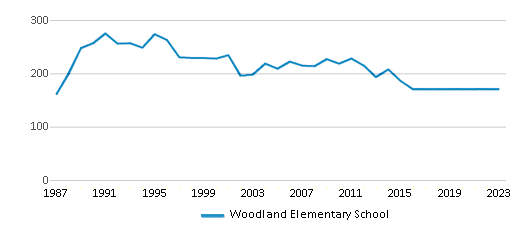
Total Classroom Teachers
7 teachers
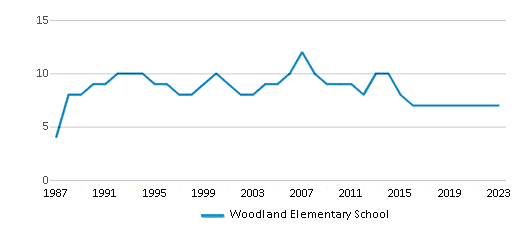
Students by Grade
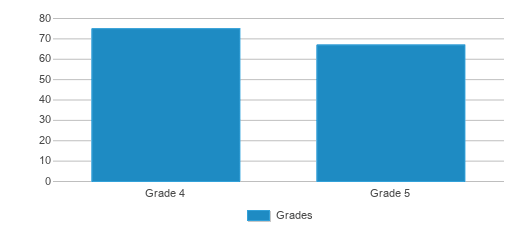
School Rankings
Math Test Scores (% Proficient)
(15-16)35-39%
31%

Reading/Language Arts Test Scores (% Proficient)
(15-16)35-39%
36%
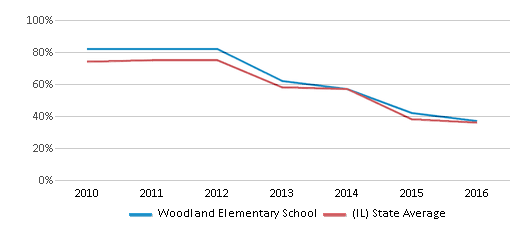
Student : Teacher Ratio
20:1
13:1
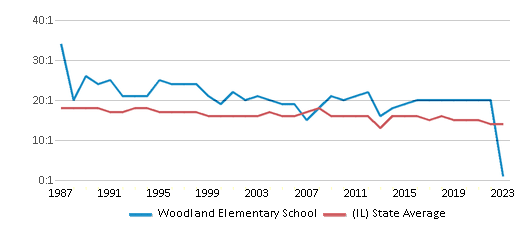
American Indian
(15-16)n/a
n/a
Asian
(15-16)n/a
5%
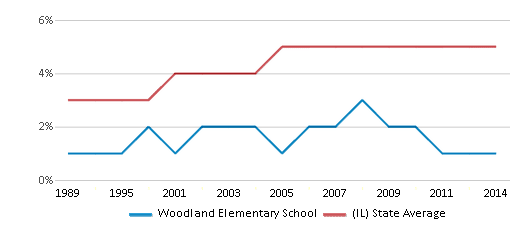
Hispanic
(15-16)10%
26%
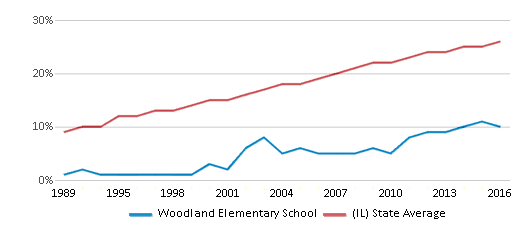
Black
(15-16)2%
17%
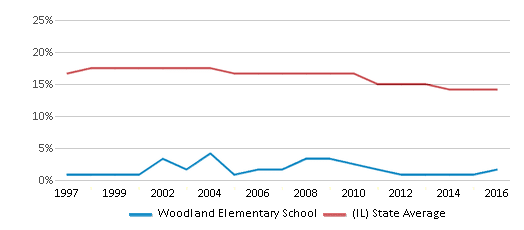
White
(15-16)85%
49%
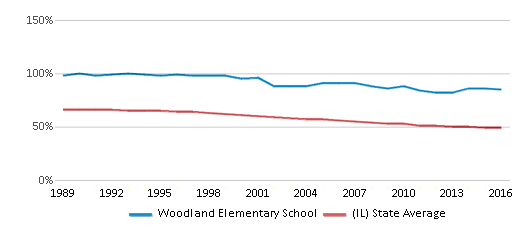
Hawaiian
(15-16)n/a
n/a
Two or more races
(15-16)3%
3%
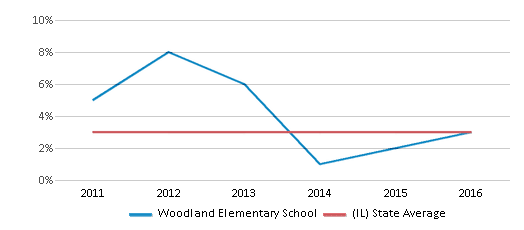
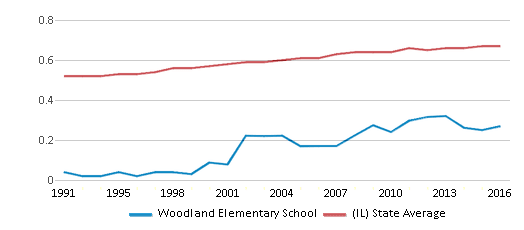
Eligible for Free Lunch
54%
43%
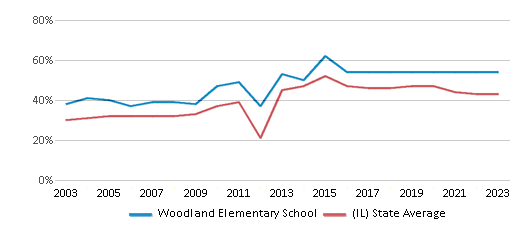
Eligible for Reduced Lunch
13%
4%
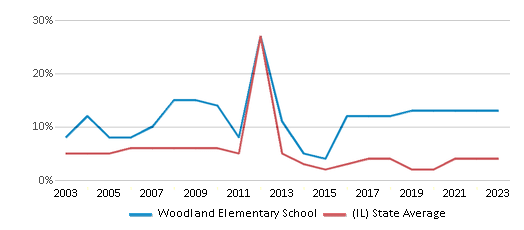
School Statewide Testing
School District Name
Source: National Center for Education Statistics (NCES), IL Dept. of Education
Frequently Asked Questions
What percent of students have achieved state testing proficiency in math and reading?
35-39% of students have achieved math proficiency (compared to the 31% IL state average), while 35-39% of students have achieved reading proficiency (compared to the 36% IL state average).
How many students attend Woodland Elementary School?
142 students attend Woodland Elementary School.
What is the racial composition of the student body?
85% of Woodland Elementary School students are White, 10% of students are Hispanic, 3% of students are Two or more races, and 2% of students are Black.
What is the student:teacher ratio of Woodland Elementary School?
Woodland Elementary School has a student ration of 20:1, which is higher than the Illinois state average of 13:1.
What grades does Woodland Elementary School offer ?
Woodland Elementary School offers enrollment in grades 4-5
What school district is Woodland Elementary School part of?
Woodland Elementary School is part of Iroquois County Community Unit School District 9.
Recent Articles

Sexual Harassment at Age 6: The Tale of a First Grade Suspension
A six-year old in Aurora, Colorado, was suspended after singing an LMFAO song to a little girl in his class and reportedly “shaking his booty.” We look at the case and the sexual harassment problem in public schools today.

How Scaffolding Could Change the Way Your Child Learns
This article explores the concept of instructional scaffolding, a teaching method that enhances learning by breaking down complex tasks into manageable parts. It highlights how scaffolding supports students in developing critical thinking skills and becoming more independent learners. The article discusses the benefits of scaffolding, including improved engagement and reduced anxiety, and provides strategies for its implementation across various educational levels.

February 05, 2025
Understanding the U.S. Department of Education: Structure, Impact, and EvolutionWe explore how the Department of Education shapes American education, from its cabinet-level leadership to its impact on millions of students, written for general audiences seeking clarity on this vital institution.





